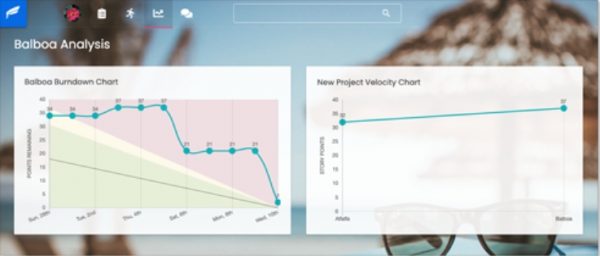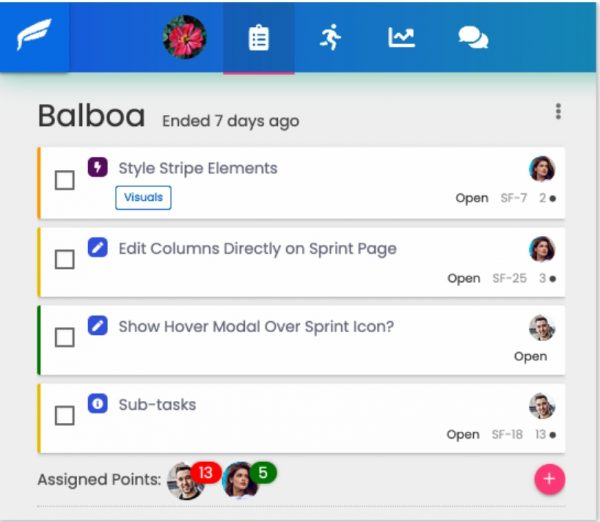There is plenty to fret about when you are running or on an agile team, but your measure of estimation should be one of them. In fact, despite what you may have heard from consultants or others, Scrum is not prescriptive about any particular estimation measure, let alone story points. Many practitioners support story points and it has been very in vogue for a while now, you should do whatever you and your team feels most comfortable with.
Author: Jerry Lupo, CEO and founder of Scrumfast.com
To be sure, all online agile tools such as Jira, Trello, Monday, ClickUp are indifferent when it comes to story points or time. At Scrumfast – a free project management tool for agile development – we take it so far as to just use the term “points”, so you don’t have to consider a more specific definition.

Definition of Story Points
While many practitioners laud the use of story points, there is no real consensus on what a story point even is. Derek Davidson of Scrum.org makes a good attempt when he says: “A Story Point is a relative unit of measure, decided upon and used by individual Scrum teams, to provide relative estimates of effort for completing requirements.“
There is a couple of important take-homes from this description. First, it mentions that the measures are decided upon by “individual Scrum teams”. That means it is a measure that can’t be used across Scrum teams. Second, it notes that story points provide “relative estimates of effort” by the team, not the individual. Finally, there is no mention of time-based estimations, which is a hallmark of story points.
Benefits of Story Points
Advocates of Story Points believe it has many benefits. For instance, they believe that story points are less stressful for developers, who will not be held to specific hours. They enjoy the fact that story points make it more difficult to compare between teams, so that there is less competition. And they also see story points as less deflating to team members who may be a bit slower than others. Finally, they conclude that story point estimation can be faster. Team members are not worried about making a commitment that is both reasonable and praiseworthy.
You can read more from Story Point advocates including Mountain Goat and Maarten Dalmijn. For a rebuttal, see Story Points vs. Hours: Let’s Pretend We Care.
Benefits of Hours
While Scrum professionals often espouse story points, there is still a significant debate on the issue. Backers of hours believe the nebulous definition of story points makes estimating via hours more straightforward. And because hours are a ubiquitous measurement, management can use them to compare between teams, and not just within them. (Under very specific circumstances, to be sure.) They also point out that external stakeholders need more precise information. No manager wants to hear how many story points it will take for a task to be complete. Finally, they note that story points require specialized training to understand.
Eban Escott of Codebots makes one of the best analyses we have seen that espouses hours, but they are hard to find.
Should You Use Story Points Or Hours?
The jury is still out on whether story points or time-based measures are “better” for Agile project management. When deciding between story points vs. hours, we recommend you work with your team, present both options, and see which they are most comfortable with. You may even care to experiment with both, which may break up the monotony of your Scrum ceremonies. Whatever you decide, do not fret about what other people think about your team’s decision; too often we hear that there is a “right way” of doing things, when what is important is whether it is right for your team.
Choosing The Best Project Management Software To Fit Your Needs
It is important that you choose a tool that supports this freedom of choice like Scrumfast. Scrumfast uses “Points” – of any flavor – to create burndown charts and track average velocity.

Burndown and Velocity Charts are automatically created based on “points” in Scrumfast.
Scrumfast even has the option to calculate team member velocity, and warn you if you have given someone too much work in a sprint. Combined with the easiest user interface out there, Scrumfast is a terrific choice for small businesses, start-ups, or even just your next personal project. And it is free for up to 5 users (and just $4 a user after that), so it allows you to be agile on a budget. Give it a shot.
Scrumfast uses color highlighting to warn project and scrum masters when the tasks assigned to them are over or under their typical pace.

About the Author
Jerry Lupo is a successful ed-tech and start up entrepreneur, CEO and founder of Scrumfast.com, the free project management tool.
This is a white paper written by Scrumfast. Contact ScrumExpert.com if you want to contribute Scrum and Agile software development content on this website.


Good points, it is good when both hours and story points are available.